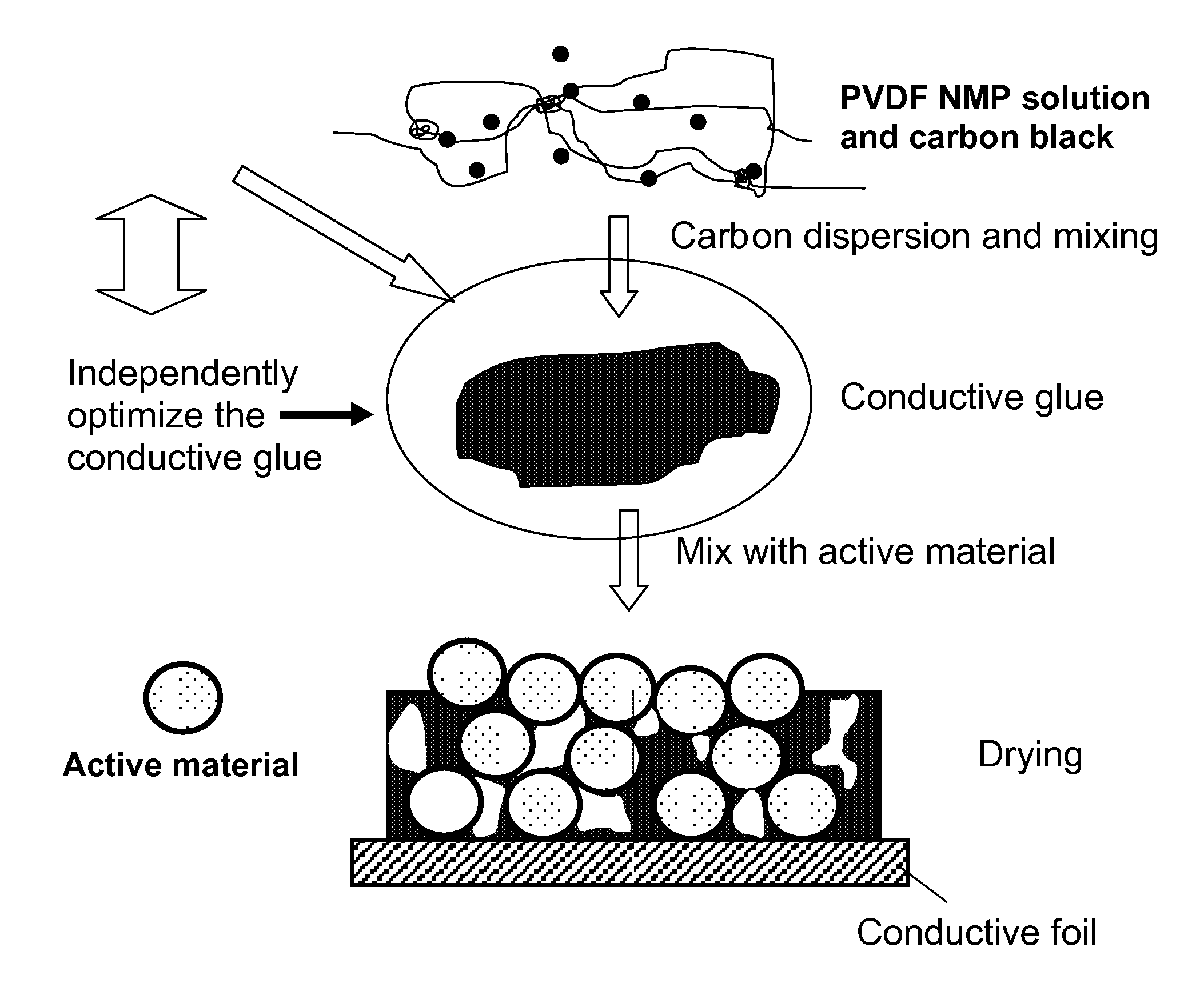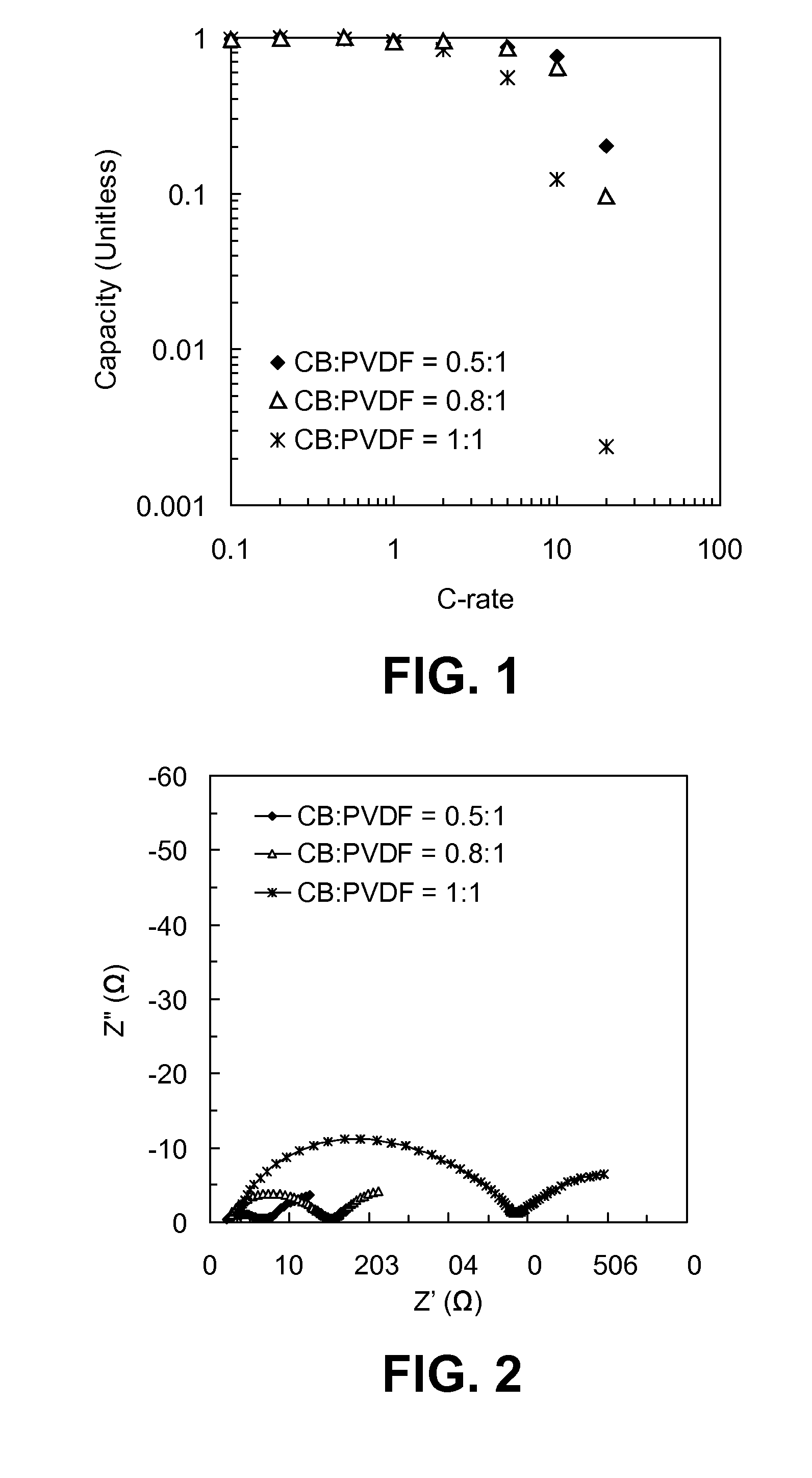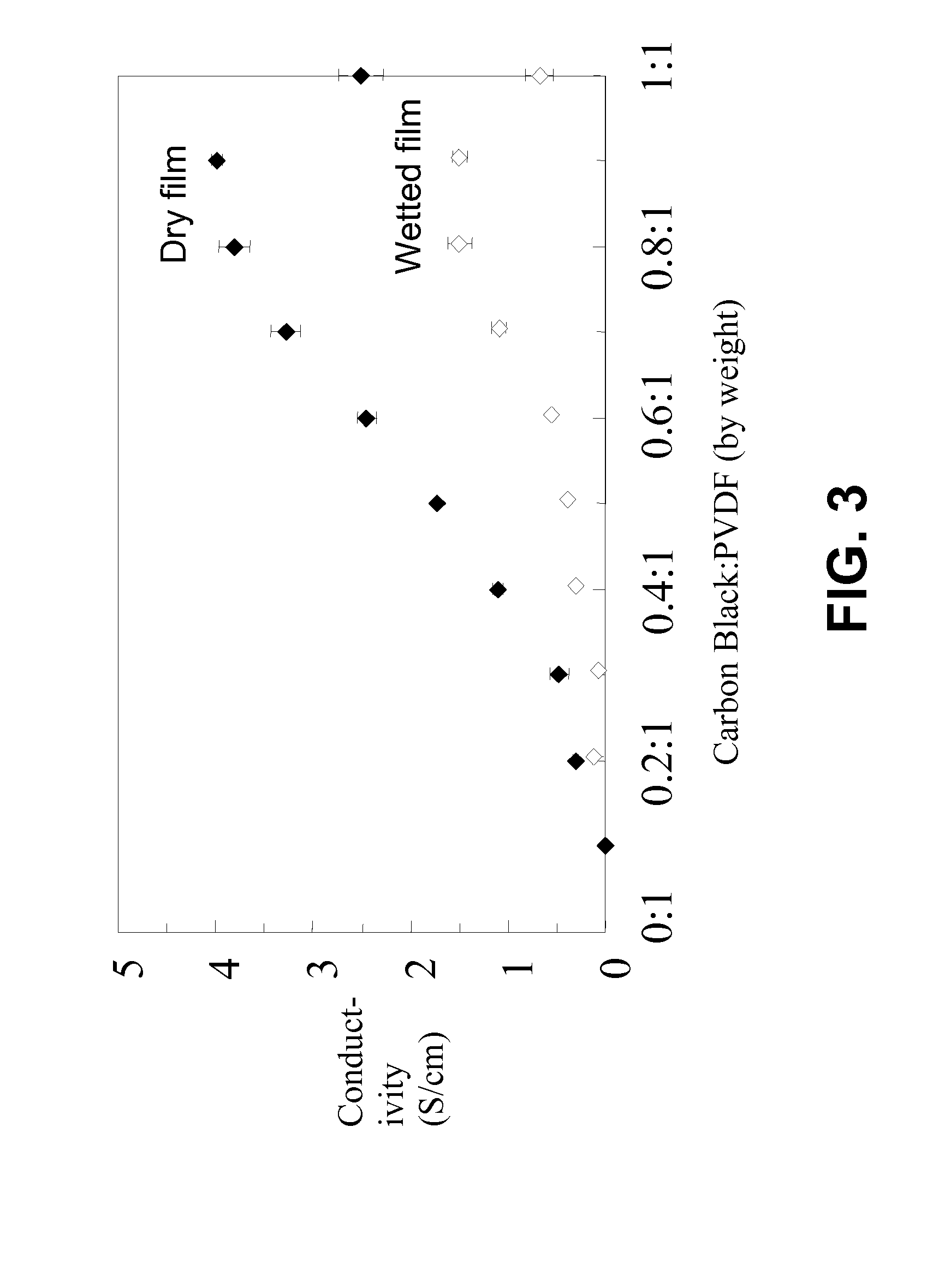High-discharge-rate lithium ion battery
a lithium ion battery, high discharge rate technology, applied in the direction of cell components, final product manufacturing, sustainable manufacturing/processing, etc., can solve the problems of battery activation, dramatic changes in lithium ion cell performance, etc., to achieve significant improvement in cell cycleability and performance.
- Summary
- Abstract
- Description
- Claims
- Application Information
AI Technical Summary
Benefits of technology
Problems solved by technology
Method used
Image
Examples
example 1
Fabrication of Gen2 Lithium Ion Pouch Cells Utilizing Mixing Sequence 1
[0107]The following is exemplary of general procedures useful for fabricating electrodes and pouch cell batteries based on Gen2 cathode material LiNi0.8CO0.15Al0.05O2 and Mag10 (graphite) anode material.
[0108]I. Cathode
[0109]The cathode electrode for Gen2 cell is composed of 84% LiNi0.8CO0.15Al0.05O2 active material, 4% acetylene black, 4% SFG-6 graphite (a second form of conductive additive) and 8% PVDF binder.
[0110]1. Slurry
[0111]It is found that pre-dispersion of acetylene black can be important for achieving a homogenous mixture, and low contact resistance for the laminate. Pre-dispersion is done by mixing 3 g of acetylene black with 50 mL of acetone and ten drops of Triton 100. This mixture is then ultrasonicated at 60% amplitude for 5 minutes in a Branson 450 sonifier. The mixture is then emerged in ice water to disperse the heat generated during sonication. The mixture is then concentrated using rotary eva...
example 2
Fabrication of LiMn2O4 (Spinel) / Graphite-Based Lithium Ion Pouch Cells Utilizing Mixing Sequence 1
[0142]The following exemplary procedures are useful for making electrodes and batteries of LiMn2O4 (spinel) and MCMB (meso carbon micro beads) graphite for high-power applications (HEVs) utilizing mixing sequence 1. Electrode performance can be very dependent on the materials used so it is pointed out that Toda M809 (LiMn2O4) was used for the cathode active material and MCMB 10-28 from Osaka Gas was used for the anode active material. The conductive additives were Dankon™ black, an acetylene black, and SFG-6, a micron-size graphite. The binder used is PVDF (Kureha 1100).
[0143]I. Cathode
[0144]1. Slurry for Both Electrodes
[0145]This slurry making procedure is optimized for both the spinel cathode material Toda M809 and the MCMB10-28 anode material.
[0146]The cathode electrode for a spinel cell is composed of 81.6% LiMn2O4 active material (Toda M809), 6.4% acetylene black (Dankon™), 4% SFG-...
PUM
| Property | Measurement | Unit |
|---|---|---|
| weight ratio | aaaaa | aaaaa |
| weight ratio | aaaaa | aaaaa |
| weight ratio | aaaaa | aaaaa |
Abstract
Description
Claims
Application Information
 Login to View More
Login to View More - R&D
- Intellectual Property
- Life Sciences
- Materials
- Tech Scout
- Unparalleled Data Quality
- Higher Quality Content
- 60% Fewer Hallucinations
Browse by: Latest US Patents, China's latest patents, Technical Efficacy Thesaurus, Application Domain, Technology Topic, Popular Technical Reports.
© 2025 PatSnap. All rights reserved.Legal|Privacy policy|Modern Slavery Act Transparency Statement|Sitemap|About US| Contact US: help@patsnap.com



